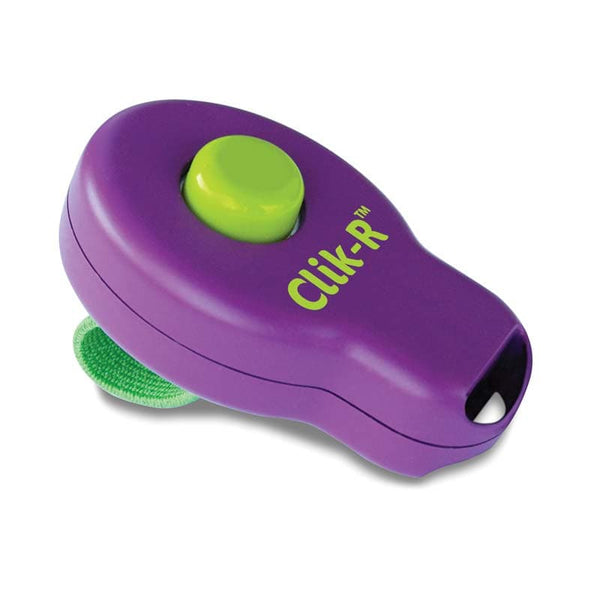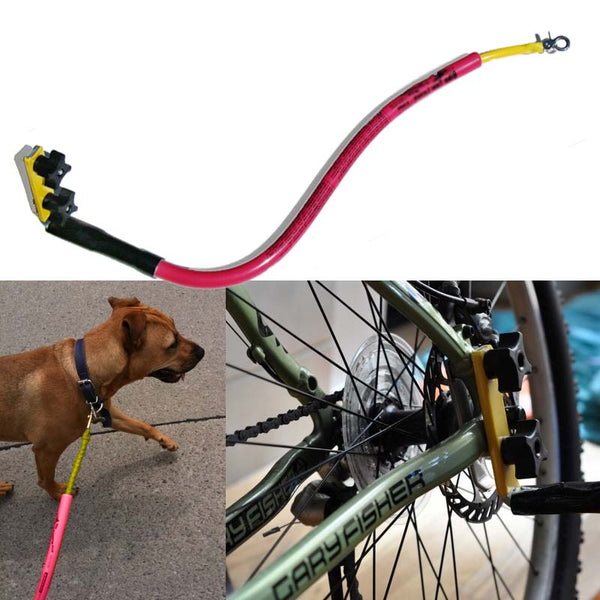Dog-Trainer-Speak Translated! An Explanation of Dog Training Terms
By Jess Rollins, Inspired by Laura Pakis, CPT
Copyright Info

If you've ever taken dog training classes, then you know there are specific expressions; "give your dog a job", "be the leader", "alpha dog", "socialization", etc. The meaning of these words and expressions may not be obvious to persons not involved in dog training. It can get more complicated when the techniques used to change a dog's behavior are called confusing things like "positive punishment" and "negative rewards"!? With this article I will define some of the vernacular used in dog training so that any layperson could understand the terms.
Temperament: The aspects of a dog's personality that are generally thought to be innate. These can be classified in many was but the dogs activity level, mood, attention span, curiosity, drives, adaptability, trainability, social tendencies, and fight or flight response are some of the more common measures of temperament. A dog's temperament influences how a dog behaves as well as how they respond to training.
Personality: The combination of all the attributes; behavioral, temperamental, emotional and mental; that create a unique individual. There can be some similarities by breed, but each dog is unique and it is best to treat them as such.
Dominance: The term dominance is rather controversial in dog training. In the past, dog trainers believed that dogs functioned in a pack hierarchy and were very concerned about "being dominant" over the humans. It was then postulated that the humans need to be sure that the dogs knew who was boss, and needed to do this using some strange things like making sure humans ate first and using punitive training methods. Modern, positive dog training is not so concerned with dominance and more concerned with changing problematic behaviors using techniques such as management and reward based training. Here is an excerpt from the APDT (A large professional organization of dog trainers): "Dominance is not a personality trait, but a "primarily a descriptive term for relationships between pairs of individuals." and moreover, the use of the expression dominant dog is meaningless, since dominance can apply only to a relationship between individuals. (Bradshaw et al., 2009) Dominance comes into play in a relationship between members of the same species when one individual wants to have the first pick of available resources such as food, beds, toys, bones, etc. Even between dogs, however, it is not achieved through force or coercion but through one member of the relationship deferring to the other peacefully. In many households the status of one dog over another is fluid; in other words, one dog may be the first to take his pick of toys, but will defer to the other dog when it comes to choice of resting places. Dogs that use aggression to "get what they want" are not displaying dominance, but rather anxiety-based behaviors, which will only increase if they are faced with verbal and/or physical threats from their human owners. Basing one's interaction with their dog on dominance is harmful to the dog-human relationship and leads to further stress, anxiety and aggression from the dog, as well as fear and antipathy of the owner."
Alpha: This is yet another controversial term and is related to dominance which is explained above. When a trainer refers to an "alpha" individual what they generally mean is the most "dominant" individual. In other words, the individual that gets what they want. Modern, positive dog trainers are not really much concerned about "alpha" and are more concerned with effective dog training based on scientific principles such as rewarding undesirable behavior and preventing and gently discouraging undesirable behavior.
Leader: Dog trainers refer to the leader as the role that the human should ideally take with their dog. The leader is fair, consistent and controls the resources that the dog wants such as food, affection, fun activities, etc. Being a good leader to your dog involves consciousness to reward behavior you like and not reward behavior you don't like in your daily life. For example, if your dog pulls on the leash a good leader does not just continue walking, but perhaps stops walking to let the dog know that pulling will not "work". Here is a little more info on leadership.
Respect: In the past dog trainers referred to respect a lot and would say things like "Your dog is not obeying because he does not respect you". Today we know that if a dog does not "obey" a "command" it is because he or she has not been trained well enough using the basic principles of dog training such as shaping, repetition, management and proofing. If you feel that your dog does not "respect" you, it may also be that you need to be more careful about how you are interacting with your dog in your daily life (see leader above). Does your dog get petted when he jumps up or laughed at for stealing a sandwich off of the table? These unclear signals will cause your dog to continue those misbehaviors. If you can be more careful about rewarding calm, polite behavior and preventing or gently discouraging "rude" behavior those "disrespectful" behaviors will evaporate.
Socialization: Socializing is very important to help teach the dog what is "normal" in it's environment and can help to promote calm and confident behavior and prevent fearful or aggressive behavior. It involves exposing the dog gradually to a variety of sights, sounds, smells, textures and tastes and is important over the dogs lifetime but of ultimate importance during puppyhood. Here is another article on socialization.
Behavior: A dog's actions. They are a response to things in the dogs environment as well as his innate tendencies. Behaviors include actions such as barking, jumping, running away or towards something, growling, etc. Luckily, behaviors can be modified by training!
Training: Attempting to alter a dog's behavior using a combination of tools such as rewards, punishments and management.
Management / Prevention: Influencing a dog's behavior by controlling the dog's environment. For example, a dog cannot chew furniture if he is crated with a chew toy while you are out. Management is useful because it helps to build a habit and also makes it easier for you to find behavior to reward/reinforce.
Consistency: Having the same response to a certain behavior from your dog every time. It really helps if all the people in the dog's environment can be consistent.
Positive Punishment: Something that is applied to a situation in order to stop the dog from doing the behavior. A classic example is yelling at a barking dog to get them to stop barking. Positive trainers use positive punishment very sparingly if at all. Positive punishment is risky because it can cause "fall out", in which the dog becomes fearful or aggressive as a response to being punished. Positive punishment should never be used alone to change a behavior. If you do yell at your dog when he barks you should also reward him when he doesn't bark.
Negative Punishment: When you take something away from the dog to discourage a behavior. A classic example is a Time Out (see below). Negative punishment is fairly benign, but should be used sparingly with an emphasis on rewarding what you do want the dog to do.
Negative Reinforcement: Something removed from a situation to increase the chance of the behavior being exhibited again, i.e. constant stimulation on an electronic collar which is removed when the dog behaves appropriately. In order to use negative reinforcement, the trainer must be able to control the "Bad Thing" that is being taken away. Positive trainers don't make much use of this modality.
Positive Reinforcement: Giving the dog something to encourage a behavior. If you like it when your dog walks nicely by your side you could praise him, feed a treat, take a few fun running steps, etc. This is where positive trainers put their focus.
Praise: Happy words spoken to communicate to your dog that he or she has done something that you like. Praise is not always effective in motivating a dog. Some dogs love it, but others need more concrete rewards such as food or play or privileges.
Reinforcement: Strengthening a behavior through rewards or punishments.
Consequence: An action or event that occurs after a behavior. It can affect how that behavior occurs in the future. For a consequence to be effective it needs to occur very closely after the behavior (within a couple of seconds).
Time Out: Putting the dog by itself in a neutral, boring place for a short time to discourage misbehavior. Click for more information on giving a dog a Time Out.
Correction: A type of positive punishment that if done correctly causes the dog to immediately begin the desired behavior. A common example is a leash jerk. Positive trainers, do not generally use corrections.
Trick: Any behavior that you teach your dog. Tricks provide entertainment and engage the dog's mind, which can help to alleviate behavior issues caused by boredom.
Command: A request for your dog to perform a certain behavior. Positive trainers prefer to use the term "cue".
"Giving your dog a job": A popular term used to explain a dog's need for mental and physical exercise. It is a tyoe of management. Properly exercising your dog can prevent lots of misbehaviors and help to foster a calm and happy dog. An example is having your dog work for his food using treat dispensing toys or training. You could also train your dog to carry a weighted pack on walks.
Motivation: A dog's desire to perform a certain behavior. You can increase a dog's motivation to perform a behavior you like by making it more rewarding.
Counter Conditioning: Building an emotional response to something in the environment. A classic example is Pavlov's dog's response to the ringing bell with salivation. We can use counter conditioning in dog training to help teach a dog to feel happier about something he was previously fearful of by pairing the fearful stimulus with something the dog loves. In order to use counter conditioning effectively, it is important not to move too fast so that the dog is too fearful.
Desensitization: Exposing the dog to a stimulus in low levels so that the dog becomes unaffected by it and then gradually increasing the level. An example of desensitization is teaching the dog not to be afraid of thunder sounds by playing a recording of the sounds at a very low volume and then gradually increasing the volume. Flooding can happen when you go to fast in desensitization and basically "throw the dog in". It is the equivalent of putting the dog in a very fearful situation and then waiting for him to habituate to it. Flooding can be very dangerous and is not recommended.
Shaping: Building a behavior in gradual steps. For example, when you first teach your dog to stay, you begin with 1 second and when your dog is successful with that you try 2 seconds and so on.
I hope a better understanding of these terms will help you decipher what your trainer is saying and get more out of your class. Most important have fun training your dog!
Happy Training!
- Jess















